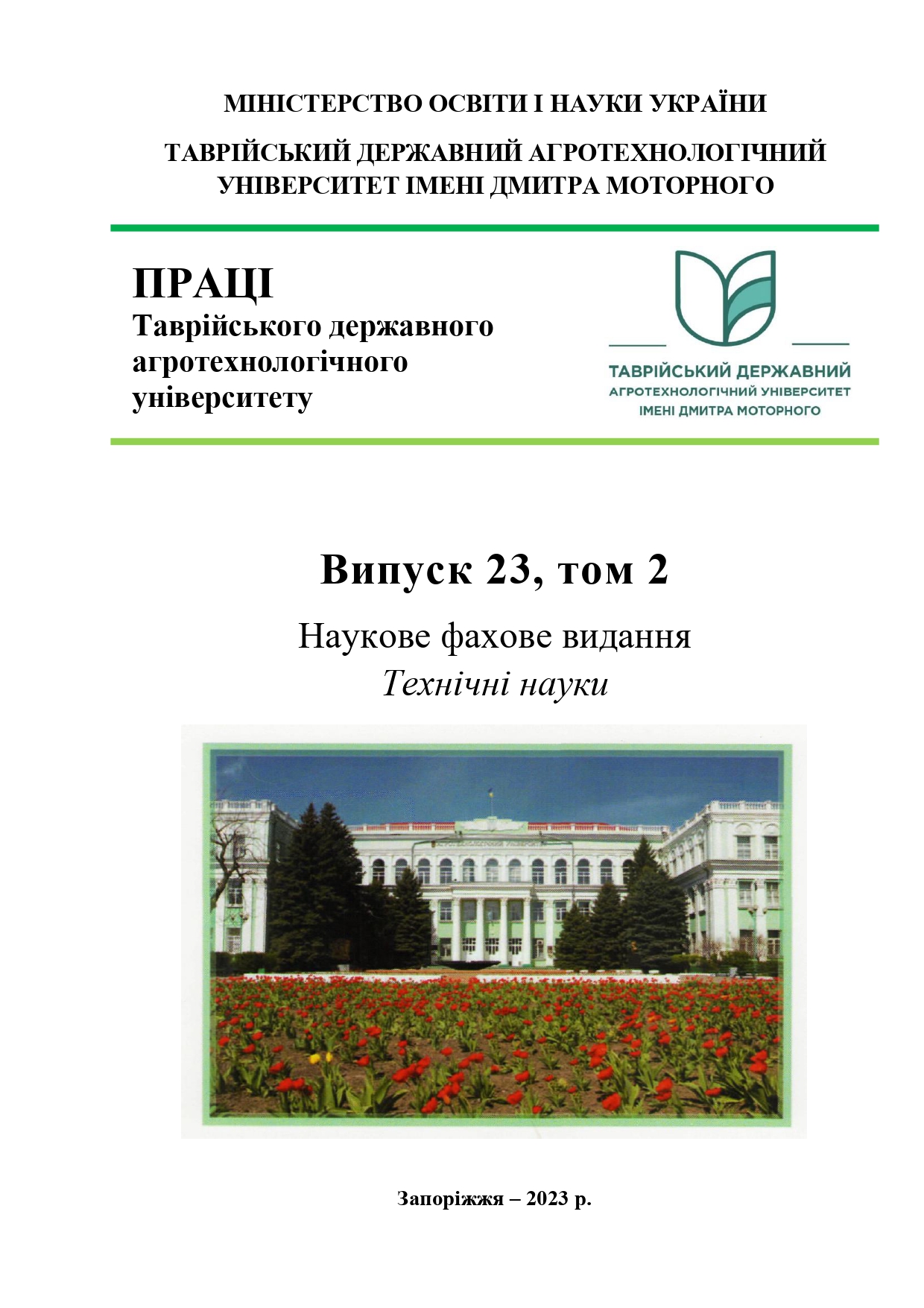МОДЕЛЮВАННЯ ФОТОЕЛЕКТРИЧНИХ ХАРАКТЕРИСТИК ГЕТЕРОПЕРЕХІДНОГО СОНЯЧНОГО ЕЛЕМЕНТА ZnO/porous-Si/Si
Анотація
Анотація. Робота спрямована на дослідження перспективних для сонячної енергетики фоточутливих структур на основі поруватого Si та ZnO. Запропоновано схему пристрою моделі сонячної батареї на основі гетероструктур ZnO/porous-Si/Si. За допомогою програми PC1D були розраховані світлові характеристики виготовленої конструкції (напруга холостого ходу VOC, струм короткого замикання ISC, коефіцієнт заповнення FF і ККД η), а також побудовані вольт-амперні характеристики. Досліджено вплив товщини шарів porous-Si та ZnO, текстурування та рівня легування шару ZnO, а також вплив температури на продуктивність гетероперехідного сонячного елемента ZnO/porous-Si/Si з метою отримання пристрою з хорошою ефективністю перетворення. Встановлено, що ефективність перетворення енергії сонячної батареї ZnO/porous-Si/Si може досягати 23,9 %.
Посилання
2. Kim J. Y., Lee J. W., Jung H. S., Shin H., Park N. G. High-efficiency perovskite solar cells. Chemical reviews. 2020. Vol. 120(15). P. 7867-7918. https://doi.org/10.1021/acs.chemrev.0c00107.
3. Powalla M., Paetel S., Ahlswede E., Wuerz R., Wessendorf C. D., Magorian Friedlmeier T. Thin‐film solar cells exceeding 22% solar cell efficiency: An overview on CdTe-, Cu (In, Ga) Se2-, and perovskite-based materials. Applied Physics Reviews. 2018. Vol. 5(4). https://doi.org/10.1063/1.5061809.
4. Blakers A., Zin N., McIntosh K. R., Fong K. High efficiency silicon solar cells. Energy Procedia. 2013. Vol. 33. P. 1-10. https://doi.org/10.1016/j.egypro.2013.05.033.
5. Köhnen E., Jošt M., Morales-Vilches A. B., Tockhorn P., Al-Ashouri A., Macco B., Kegelmann L., Korte L., Rech B., Schlatmann R., Stannowski B. Highly efficient monolithic perovskite silicon tandem solar cells: analyzing the influence of current mismatch on device performance. Sustainable Energy & Fuels. 2019. Vol. 3(8). P. 1995-2005. https://doi.org/10.1039/c9se00120d.
6. Zahid M. A., Khokhar M. Q., Kim Y., Yi J. Utilization of CaF2/ITO Double Layer Anti Reflective Coating for Increasing the Efficiency in Rear Emitter SHJ Solar Cells. Crystal Research and Technology. 2022. Vol. 57(8). P. 2100233. https://doi.org/10.1002/crat.202100233.
7. Ho W. J., Yang H. Y., Liu J. J., Lin P. J., Ho C. H. Plasmonic effects of two-dimensional indium-nanoparticles embedded within SiO2 anti-reflective coating on the performance of silicon solar cells. Applied Surface Science. 2020. Vol. 508. P. 145275. https://doi.org/10.1016/j.apsusc.2020.145275.
8. Дяденчук А. Ф., Кідалов В. В. Гетероструктури n-ZnO:Al/porous-CdTe/p-CdTe в якості фотоелектричних перетворювачів. Наносистеми, наноматеріали, нанотехнології. 2017. Т. 15, № 3. С. 487-494.
9. Omar A., Ali M. S., Abd Rahim N. Electron transport properties analysis of titanium dioxide dye-sensitized solar cells (TiO2-DSSCs) based natural dyes using electrochemical impedance spectroscopy concept: A review. Solar Energy. 2020. Vol. 207. P. 1088-1121. https://doi.org/10.1016/j.solener.2020.07.028.
10. Zaien M., Ahmed N. M., Hassan Z. Fabrication and Characterization of an n-CdO/p-Si Solar Cell by Thermal Evaporation in a Vacuum. Int. j. Electrochem. Sci. 2013. Vol. 8. P. 6988-6996. https://doi.org/10.1016/S1452-3981(23)14822-X.
11. Xu M., Xu Z., Sun Z., Chen W., Wang L., Liu Y., ... Pan S. Surface Engineering in SnO2/Si for High-Performance Broadband Photodetectors. ACS Applied Materials & Interfaces. 2023. Vol. 15(2). P. 3664-3672. https://doi.org/10.1021/acsami.2c20073.
12. Yıldırım H. Excitons in nonpolar ZnO/BeZnO quantum wells: Their binding energy and its dependence on the dimensions of the structures. Physica B: Condensed Matter. 2022. Vol. 639. P. 413974. https://doi.org/10.1016/j.physb.2022.413974.
13. Vyas S. A short review on properties and applications of zinc oxide based thin films and devices: ZnO as a promising material for applications in electronics, optoelectronics, biomedical and sensors. Johnson Matthey Technology Review. 2020. Vol. 64(2). P. 202-218. https://doi.org/10.1595/205651320X15694993568524.
14. Kanmaz İ. Simulation of CdS/p-Si/p+-Si and ZnO/CdS/p-Si/p+-Si heterojunction solar cells. Results in Optics. 2023. Vol. 10. P. 100353. https://doi.org/10.1016/j.rio.2023.100353.
15. Dwivedi D. K. Modeling of CZTSSe solar photovoltaic cell for window layer optimization. Optik. 2020. Vol. 222. P. 165407. https://doi.org/10.1016/j.ijleo.2020.165407.
16. Boudour S., Bouchama I., Hadjab M., Laidoudi S. Optimization of defected ZnO/Si/Cu2O heterostructure solar cell. Optical Materials. 2019. Vol. 98. P. 109433. https://doi.org/10.1016/j.optmat.2019.109433.
17. Chen L., Chen X., Liu Y., Zhao Y., Zhang X. Research on ZnO/Si heterojunction solar cells. Journal of Semiconductors. 2017. Vol. 38(5). P. 054005. https://doi.org/10.1088/1674-4926/38/5/054005.
18. Najim S. A. Fabrication of p-Si/ZnO Thin Films Solar Cell by CVD at Different Substrate Temperatures. College Of Basic Education Researches Journal. 2019. Vol. 15(4).
19. Gerlach D., Wilks R. G., Wippler D., Wimmer M., Lozac'h M., Félix R., ... Bär M. The silicon/zinc oxide interface in amorphous silicon-based thin-film solar cells: Understanding an empirically optimized contact. Applied Physics Letters. 2013. Vol. 103(2). https://doi.org/10.1063/1.4813448.
20. Lai K. C., Liu C. C., Lu C. H., Yeh C. H., Houng M. P. Characterization of ZnO: Ga transparent contact electrodes for microcrystalline silicon thin film solar cells. Solar Energy Materials and Solar Cells. 2010. Vol. 94(3). P. 397-401. https://doi.org/10.1016/j.solmat.2009.12.002.
21. Abass K. H., Mohammed M. K. Fabrication of ZnO: Al/Si solar cell and enhancement its efficiency via Al-doping. Nano Biomedicine and Engineering. 2019. Vol. 11(2). P. 170-177. https://doi.org/10.5101/nbe.v11i2.p170-177.
22. Abe Y., Kagei T., Sichanugrist P., Konagai M. Development of double-textured ZnO: B substrates for improving microcrystalline silicon solar cell performance. IEEE Journal of Photovoltaics. 2014. Vol. 4(6). P. 1374-1379. https://doi.org/10.1109/JPHOTOV.2014.2358085.
23. Ding J., Zhou Y., Dong G., Liu M., Yu D., Liu F. Solution processed ZnO as the efficient passivation and electron selective layer of silicon solar cells. Progress in Photovoltaics: Research and Applications. 2018. Vol. 26(12). P. 974-980. https://doi.org/10.1002/pip.3044.
24. Hussain B., Ebong A., Ferguson I. Zinc oxide as an active n-layer and antireflection coating for silicon based heterojunction solar cell. Solar Energy Materials and Solar Cells. 2015. Vol. 139. P. 95-100. https://doi.org/10.1016/j.solmat.2015.03.017.
25. Chala S., Sengouga N., Yakuphanoğlu F., Rahmane S., Bdirina M., Karteri İ. Extraction of ZnO thin film parameters for modeling a ZnO/Si solar cell. Energy. 2018. Vol. 164. P. 871-880. https://doi.org/10.1016/j.energy.2018.09.035.
26. Wenas W. W., Riyadi S. Carrier transport in high-efficiency ZnO/SiO2/Si solar cells. Solar Energy Materials and Solar Cells. 2006. Vol. 90. P. 3261-7 https://doi.org/10.1016/j.solmat.2006.06.026.
27. Vallisree S., Thangavel R., Lenka L. T. Modelling, simulation, optimization of Si/ZnO and Si/ZnMgO heterojunction solar cells. Materials Research Express. 2018. Vol. 6(2). P. 025910. https://doi.org/10.1088/2053-1591/aaf023.
28. Jamil N. Y., Ivashchenko M. M., Abdulla S. N., Muhammed A. A. K., Pogrebnjak A. D. Design and Fabrication Heterojunction Solarcell of Si-CdS-ZnO Thin Film. In Proceedings of the international conference nanomaterials: applications and properties (No. 1, no. 4, pp. 04NMEEE09-04NMEEE09). Sumy State University Publishing. 2012.
29. Zhang M., Gao X., Barra A., Chang P., Huang L., Hellwarth R., Lu J. G. Core-shell structured Si/ZnO photovoltaics. Materials Letters. 2015. Vol. 140. P. 59-63. https://doi.org/10.1016/j.matlet.2014.10.083.
30. Zhao F., Lin J., Lei Z., Yi Z., Qin F., Zhang J., ... Wu P. Realization of 18.97% theoretical efficiency of 0.9 μm thick c-Si/ZnO heterojunction ultrathin-film solar cells via surface plasmon resonance enhancement. Physical Chemistry Chemical Physics. 2022. Vol. 24(8). P. 4871-4880. https://doi.org/10.1039/D1CP05119A.
31. Chabane L., Zebbar N., Trari M., Kechouane M. Opto-capacitive study of n-ZnO/p-Si heterojunctions elaborated by reactive sputtering method: Solar cell applications. Thin Solid Films. 2017. Vol. 636. P. 419-424. https://doi.org/10.1016/j.tsf.2017.06.041.
32. Naim H., Shah D. K., Bouadi A., Siddiqui M. R., Akhtar M. S., Kim C. Y. An In-Depth Optimization of Thickness of Base and Emitter of ZnO/Si Heterojunction-Based Crystalline Silicon Solar Cell: A Simulation Method. Journal of Electronic Materials. 2022. Vol. 51(2). P. 586-593. https://doi.org/10.1007/s11664-021-09341-5.
33. Huang F., Guo B., Li S., Fu J., Zhang L., Lin G., ... Cheng Q. Plasma-produced ZnO nanorod arrays as an antireflective layer in c-Si solar cells. Journal of Materials Science. 2019. Vol. 54. P. 4011-4023. https://doi.org/10.1007/s10853-018-3099-1.
34. Singh Bhim, Vivek Gupta. Modelling and simulation of silicon solar cells using PC1D. Materials Today: Proceedings. 2022. Vol. 54. P. 810-813. https://doi.org/10.1016/j.matpr.2021.11.092.
35. Sharma Rajinder. Silicon nitride as antireflection coating to enhance the conversion efficiency of silicon solar cells. Turkish Journal of Physics. 2018. Vol. 42(4). P. 350-355. https://doi.org/10.3906/fiz-1801-28.
36. Dyadenchuk A. F., Kidalov V. V. Films CdS Grown on porous Si Substrate. Journal of Nano- and Electronic Physics. 2018. Vol. 10(1). No 01007-1-01007-4.
37. Muhfidin Rivan, Song Yu. Temperature Effects on the Performance of Silicon Solar Cells using PC1D. Proceedings of the 2nd International Conference on Industrial and Technology and Information Design, ICITID 2021, 30 August 2021, Yogyakarta, Indonesia. 2021. http://dx.doi.org/10.4108/eai.30-8-2021.2311501.
38. Abdullah C. A. C., Razak D. F. A., Yunus M. B. M., Zaki M., Yusoff M. Structural and Optical Properties of N-Type and P-Type Porous Silicon Produced at Different Etching Time. Int. J. Electroactive Mater. 2019. Vol. 7. P. 28-37.
39. Yadav C., Kumar S. Numerical simulation for optimization of ultra-thin n-type AZO and TiO2 based textured p-type c-Si Heterojunction Solar Cells. Silicon. 2021. P. 1-9. https://doi.org/10.1007/s12633-021-01212-2.
40. Bilyalov R., Stalmans L., Beaucarne G., Loo R., Caymax M., Poortmans J., Nijs J. Porous silicon as an intermediate layer for thin-film solar cell. Solar Energy Materials and Solar Cells. 2001. Vol. 65(1-4). P. 477-485. https://doi.org/10.1016/S0927-0248(00)00130-6.
41. Ray J., Chaudhuri T. K., Panchal C., Patel K., Patel K., Bhatt G., Suryavanshi P. PbS-ZnO Solar Cell: A Numerical Simulation. Journal of Nano-and Electronic Physics. 2017. Vol. 9(3).
42. Husen M. J., Aga F. G., Dibaba S. T. Theoretical Performance Analysis of Inverted P3HT: PCBM Based Bulk Hetero-Junction Organic Solar Cells through Simulation. Advances in Materials Science and Engineering. 2023. Vol. 2023. P. 6. https://doi.org/10.1155/2023/4204298.
43. King R. R., Mitchell K. W., Gee J. M. Back Surface Cell Structures for Reducing Recombination in CZ Silicon Solar Cells. Proceedings of 1994 IEEE 1st World Conference on Photovoltaic Energy Conversion - WCPEC (A Joint Conference of PVSC, PVSEC and PSEC), Waikoloa, USA. 1994. https://doi.org/10.1109/WCPEC.1994.519966.



